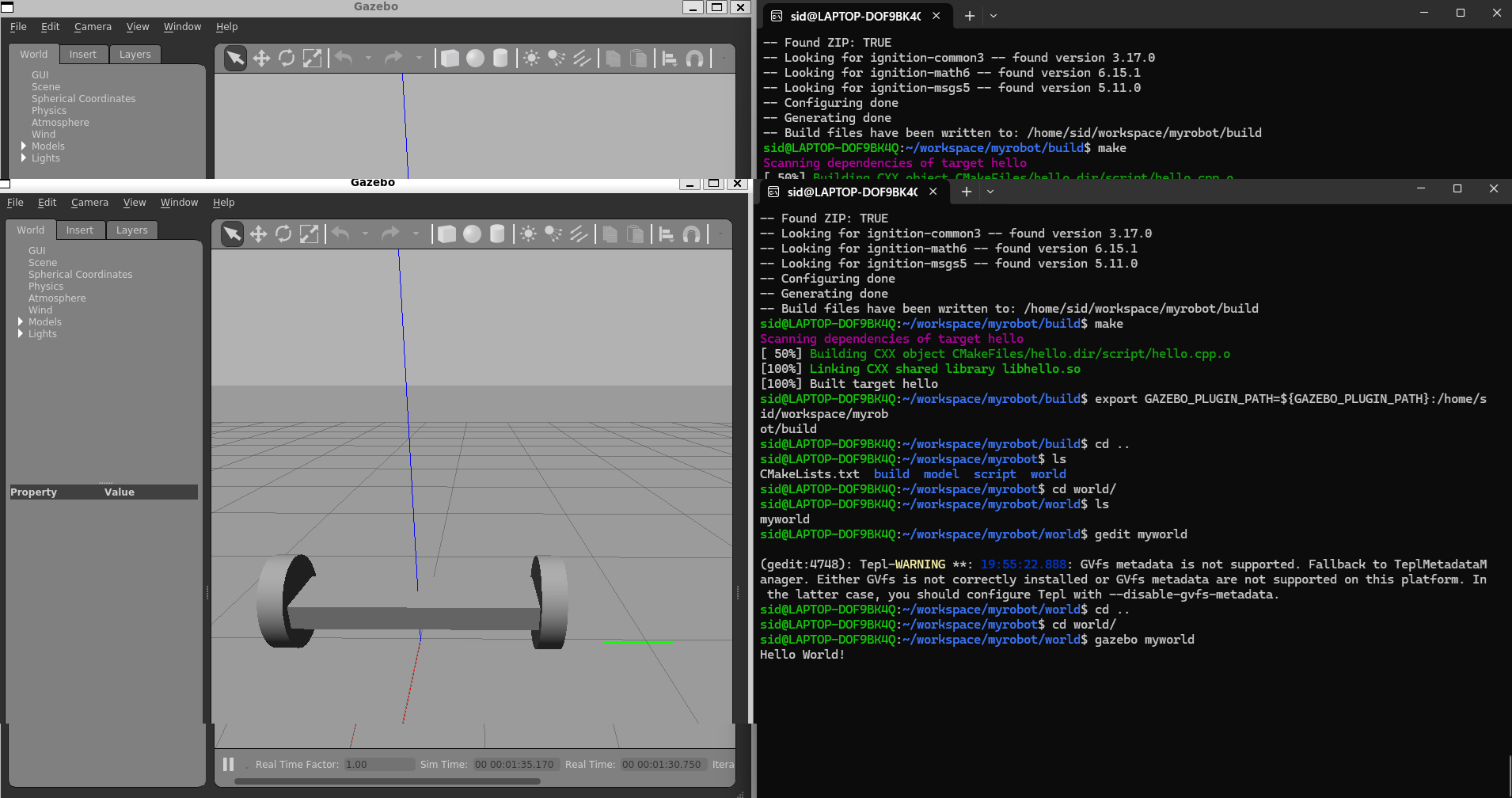The purpose of this repository is to learn, how to build a two-wheeled robot model with the Model Editor tool in Gazebo. Include this model in an empty Gazebo World. And, finally write a plugin to interact with this world.
Overview of Gazebo through a two-wheeled robot model creation.
.myrobot # myrobot lab main folder
├── images # Code output image
│ ├── myrobot.png
├── model # Model files of the two-wheeled robot
│ ├── robot
│ │ ├── model.config
│ │ ├── model.sdf
│ ├── mybuilding
│ │ ├── model.config
│ │ ├── model.sdf
├── script # Gazebo World plugin C++ script
│ ├── hello.cpp
├── world # Gazebo main World empty scene
│ ├── myworld
├── CMakeLists.txt # Link libraries
└──
- Operating System — Ubuntu Bionic 18.04 LTS or 20.04 LTS (Focal Fossa), and WSL on Windows
- Software packages — CMake 2.8 or later, ROS Noetic, Gazebo 11
- Gazebo Classic 11.0 will reach its end of life by Feb 2025.
- ROS Noetic is supported for 20.04 and will reach its end of life in May 2025.
- Install ROS Noetic using Ubuntu/WSL
- Install Gazebo using Ubuntu packages
- Install ROS Noetic using Robostack for Mac
- Install Gazebo on Mac
- To verify installation, run
gazebo
-
How to run the program
- Update and upgrade the Workspace
sudo apt-get update && sudo apt-get upgrade -y- Clone the lab folder in /home/workspace/
cd /home/workspace/ git clone https://github.com/udacity/RoboND-myrobot myrobot- Compile code
mkdir build cd build/ cmake ../ make # You might get errors if your system is not up to date!- Add the library path to the Gazebo plugin path
export GAZEBO_PLUGIN_PATH=${GAZEBO_PLUGIN_PATH}:/home/workspace/myrobot/build- Run Gazebo world
cd /home/workspace/myrobot/world/ gazebo myworld
A Hello World! message is printed in the terminal. This message interacts with the Gazebo World that includes the two-wheeled robot.
